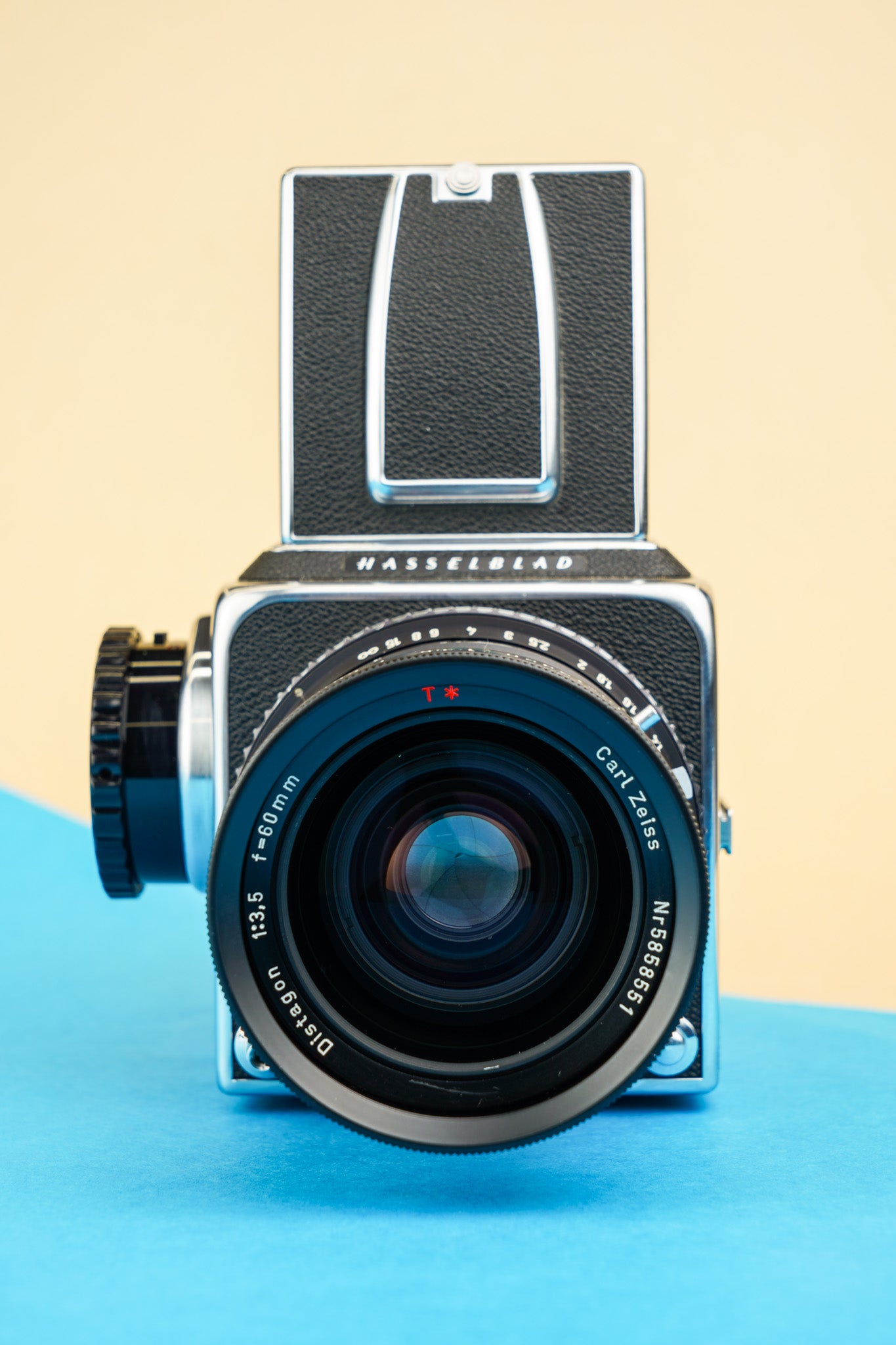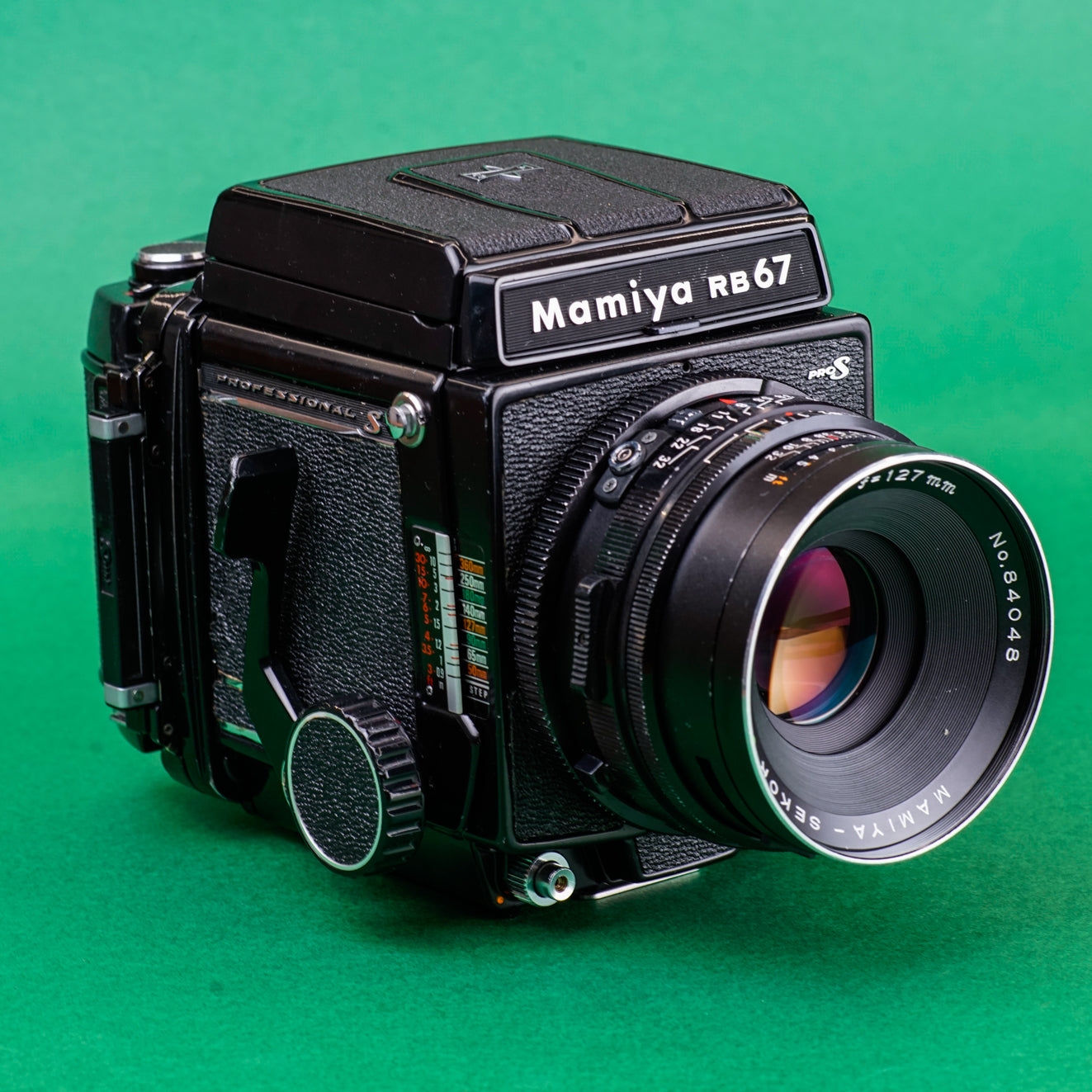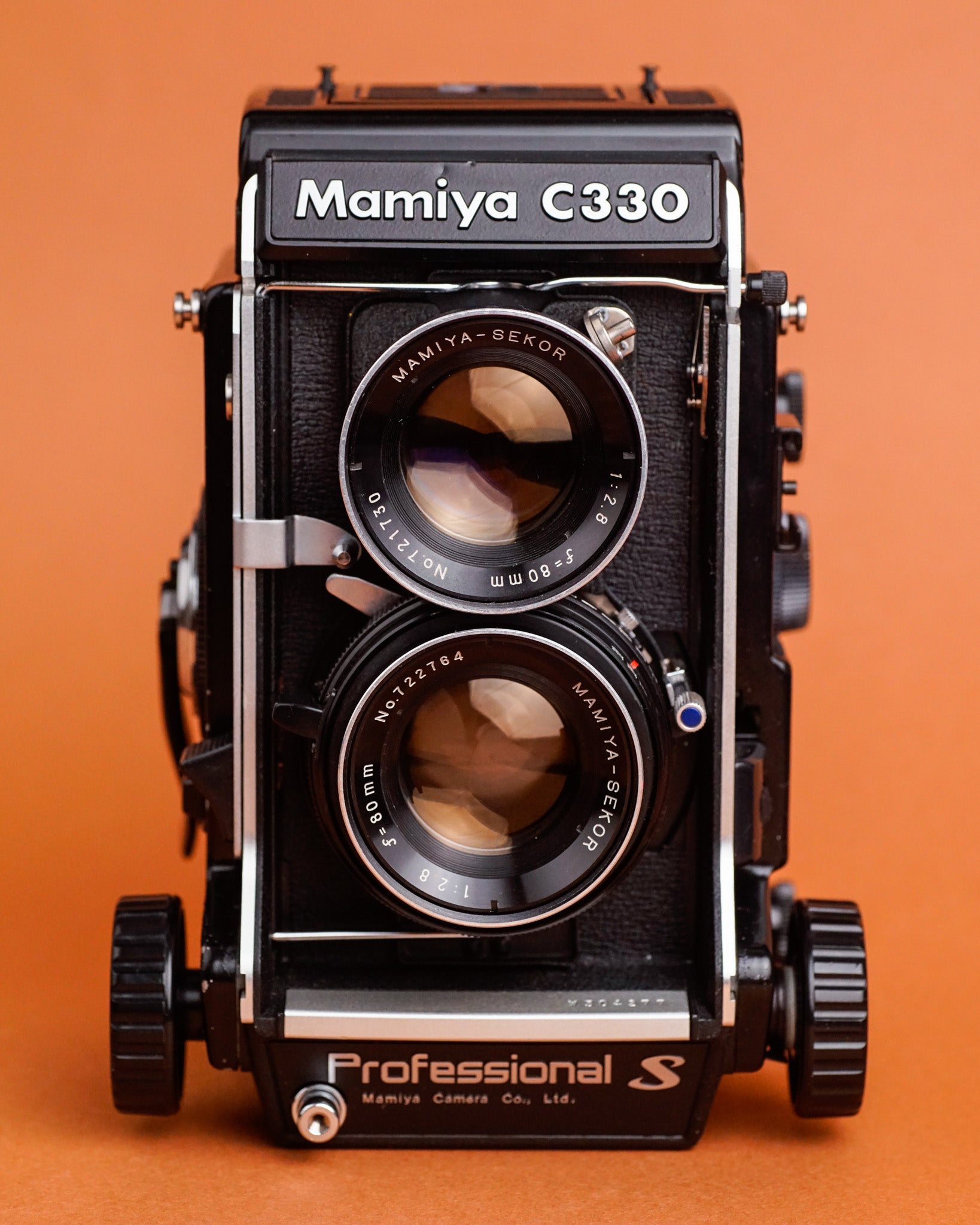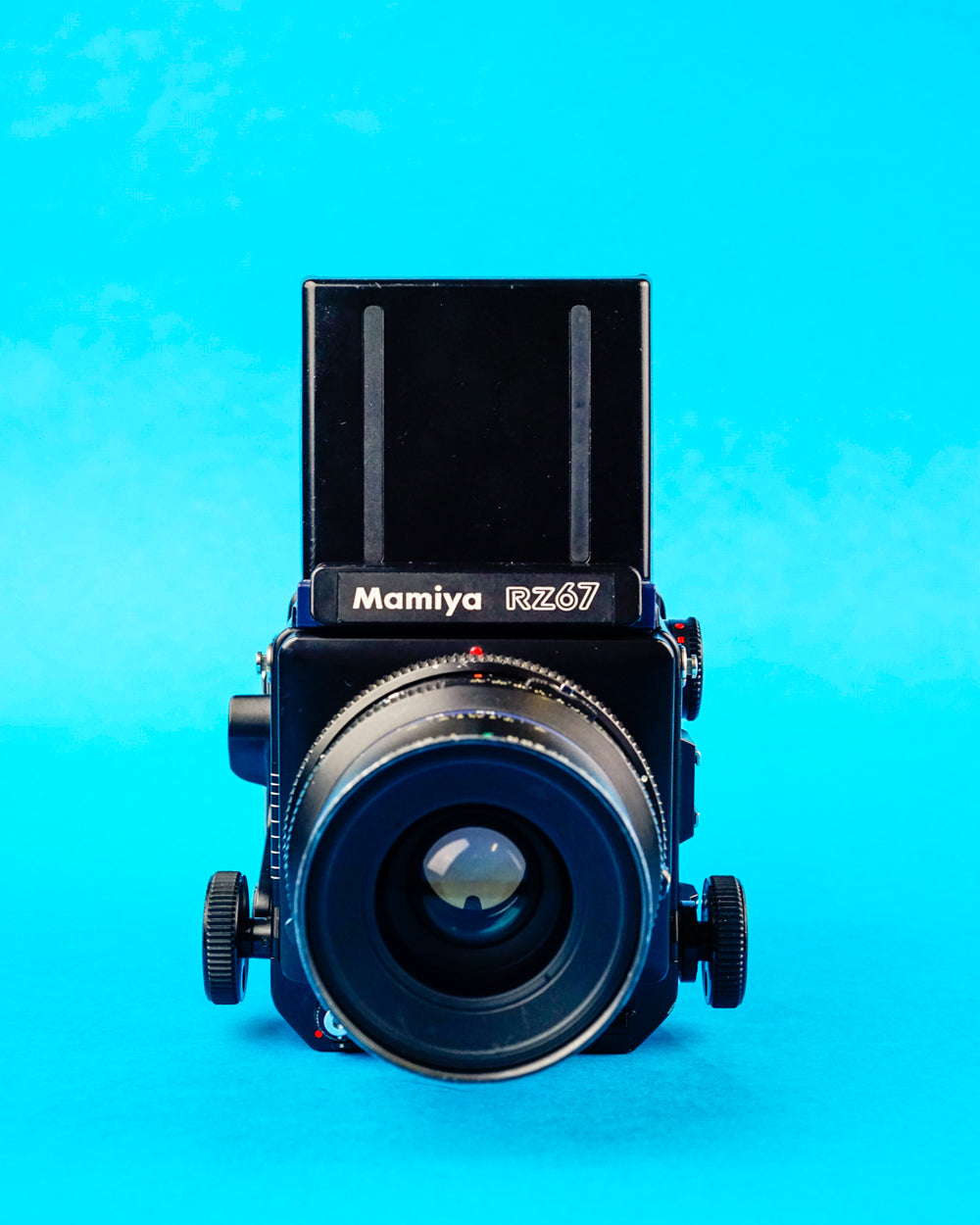Top 10 Medium Format Cameras for 2022
Mục Lục
Introduction
Let’s get started with the big boys! Our second list is the Top 10 Medium Format Cameras of 2022!
As 2022 approaches, we’ve been taking some time to look back over the past year. While it was a chaotic time for everyone, the film community saw impressive growth. More and more people are picking up old cameras, and more and more people are recognizing the need to keep these lovely machines in working order. That’s where we come in!
We have access to unique data regarding google searches, advertisement results, and other data sources that give us a rough estimate of how much people search for a specific model. We’ve crunched the numbers and are proud to present a number of Top 10 lists for you to ring in 2022!
I mention this so that it’s clear that this list is not the opinion of Kamerastore. It’s an amalgamation of data driven almost entirely by customers and film lovers like you! If a camera you love isn’t on the list, then spread the word and get it higher in search results! Or don’t, and enjoy a hidden gem. Up to you!
Our second list is the top medium format cameras of 2022, based on data taken throughout 2021. Our first list was the top 10 35mm SLRs, so click here if you haven’t seen that one yet! Otherwise, click below to see the video or scroll down to see the text version!

10. Yashica MAT 124G
- Twin Lens Reflex (TLR) camera taking 6x6cm exposures
- Shutter: Copal, 1s – 1/500s + B
- ISO range: 25 – 400
- Released in 1970.
- Fully mechanical operation, PX625 battery required only for light meter.
- Low-price TLR featuring a coupled CdS light meter, and final Yashica TLR to be produced.
The Yashica MAT 124G is arguably the most well-regarded TLR made by anyone but Rollei, so it makes sense to see it on the list. Although it cannot match the image or build quality of the Rollei cameras, it does a few things even better than its German counterpart.
The most notable feature here is the built-in CdS light meter. All of Yashica’s previous TLRs either had no meter or a selenium cell that may go bad over time. This model does take outdated 1.3v mercury batteries, but these can be easily substituted or replicated to use the internal meter.
The Yashica MAT line is a common first choice for medium format cameras due to its low price point and relative abundance compared to some other cameras on this list.
Alternatives: Minolta Autocord, Yashica-12, Zeiss Ikon Ikoflex

9. Rolleiflex 2.8
- Twin Lens Reflex (TLR) camera taking 6x6cm exposures.
- Shutter: Various, generally Synchro-Compur, 1s – 1/500s + B
- Released in 1950.
- Fully mechanical operation, no batteries required for operation.
- First massively popular TLR, features fast-aperture Carl Zeiss or Schneider-Kreuznach optics.
If you’re into TLRs, chances are you’ve looked up a Rolleiflex 2.8 at one point. So thanks for contributing to this list! Although the 2.8 model is actually a line of products sold from 1950 until 2000, their changes are more iterative than revolutionary so we decided to include them all.
The Rolleiflex is the iconic TLR design, with most TLRs that came afterwards being branded Rolleiflex copies. The 2.8 models released after World War II and featured lightning-fast f2.8 Carl Zeiss or Schneider-Kreuznach taking lenses. The Carl Zeiss lenses are the draw for many, but the Schneider options more than hold their own.

The Rolleiflex is unmatched in build and image quality by any TLR, and even has advantages over more flexible systems. The waist level finder makes it quite discreet, the leaf shutter is extremely quiet, and the classic aesthetic puts people at ease/draws attention. It’s a camera people don’t mind having their photo taken with, generally.
Alternatives: Rolleiflex 3.5, Rolleicord, Yashica MAT 124G

8. Mamiya 6
- Rangefinder camera taking 6x6cm exposures
- Shutter: (In-Lens) 4s – 1/500s + B
- Released in 1989.
- 2x LR44 battery required for all operations, including light meter and shutter.
- Collapsible, ultra-lightweight rangefinder with 3 interchangeable lenses.
The Mamiya 6 lives a bit in the shadow of its younger 6×7 brother, but it’s a truly superb camera in its own right. There are a few key differences between the 6 and the 7 that might make one a better camera than the other for you.
The 6 is square format, taking 12 6x6cm exposures on each roll. The 6 has only 3 interchangeable lenses (50mm, 75mm, 150mm) but they collapse into the body, making the 6 one of the most compact medium format cameras ever made.
The lenses are a bit slow compared to SLR lenses, but it becomes incredibly difficult to nail focus at shallow depth of field using a rangefinder, especially close-up. If you’re looking to take close-up portraits, a rangefinder camera like this is not for you.
The Mamiya 6 is likely on this list mostly for its relationship to the Mamiya 7, where people are turned away by the prices of the later 6×7 model and decide to check out the cheaper 6×6 model. That being said, the 6 still offers an incredibly unique shooting experience that few other cameras can compare to.
Alternatives: Bronica RF645, Mamiya Six, Zeiss Ikon Super Ikonta III, Fujica GS645

7. Hasselblad 500C
- Modular Single Lens Reflex (SLR) camera taking 6×6 exposures
- Shutter: (In-Lens) Synchro-Compur, 1s – 1/500s + B.
- Released in 1957.
- Fully mechanical operation, no battery required.
- First modular Hasselblad camera using leaf-shutter lenses. Does not have user-interchangeable focusing screens.
The 500C is the grand-daddy of all Hasselblad V cameras, and introduced the now-iconic leaf shutter modular SLR system. Previous Hasselblad cameras used finicky focal plane shutters that were prone to failure and didn’t offer the same flash-sync benefits of the leaf shutter system.
The only downside of the leaf shutter system is the max shutter speed only being 1/500s, although this is more than usable in most situations. The 500C was also the first camera to be used in moon missions, by both NASA and European space agencies.

The main difference between the 500C and the more-popular 500C/M is that the C/M has user-interchangeable focusing screens. The screens can be changed on the 500C, but it requires a professional who is trained to do it.
Alternatives: Hasselblad 500C/M, Bronica SQ, Rolleiflex SL66, Kiev 88

6. Pentax 67
- Single Lens Reflex (SLR) camera taking 6x7cm exposures
- Shutter: 1s – 1/1000s + B
- Released in 1969.
- 4LR44 battery required for all operations, including shutter & light meter.
- “Super SLR” bringing the handling of a 35mm SLR to the 6x7cm format.
This Pentax SLR is a great medium format option if you’re truly attached to the SLR form factor. Essentially, it’s a 35mm SLR scaled up to take 120 film. There are a few models in the 67 line, which was produced for over 40 years. These models added various electronic features and high-end metering modes.
Like professional 35mm SLRs of the time, the 67 line comes with interchangeable lenses, prisms, and focusing screens. The only thing it’s missing, when compared to modular SLRs like the Hasselblad 500C, is interchangeable backs. This means the camera must be unloaded and reloaded after each roll.
The Pentax 67 is the only “traditional” SLR design on the list, arguably due to reliability issues plaguing all of its competitors. Even the 67 has some issues with reliability. Focal plane shutters are rare in medium format because they’re prone to failure at such large sizes.
If you can find a working model, though, the Pentax 67 offers extreme image quality in a form factor that most people can understand when transitioning from 35mm to 120.
Alternatives: Pentacon Six, Exakta 66, Norita 66, Kiev 60

5. Hasselblad 500C/M
- Modular Single Lens Reflex (SLR) camera taking 6x6cm exposures.
- Shutter: (In-Lens) 1s – 1/500s + B
- Released in 1970.
- Fully mechanical operation, no battery required.
- Iconic Hasselblad SLR, produced for over 20 years with a huge line of accessories & lenses.
The Hasselblad 500C/M is the most widely known Hasselblad camera out there. It was produced until 1994 despite Hasselblad releasing 5 new V series cameras in that time. As mentioned above, the main difference between the 500C/M and the earlier 500C is the inclusion of user-interchangeable focusing screens.
Being able to change focusing screens may not seem like such a big improvement, but when paired with the interchangeable prisms, film backs, lenses, winders, and accessories, it makes sense why they call the Hasselblad 500C/M a truly modular system.

Otherwise, the 500C/M is nearly identical to the 500C. There are just many more of them out there due to the 500C/M’s long production run.
Alternatives: Kiev 88, Bronica SQ, Rolleiflex SL66

4. Mamiya 7
- Rangefinder camera taking 6x7cm exposures.
- Shutter: (In-Lens) 1s – 1/400s + B
- Released in 1995.
- 4LR44 battery required for all operations, including shutter & light meter.
- Ultra-lightweight rangefinder camera capturing huge 6x7cm negatives with a wide range of excellent Mamiya lenses.
The Mamiya 7 might be the most sought-after medium format camera on the market. Because it was only released in 1995, there aren’t as many of them as the rest of the cameras on the list. Despite that, it has a cult following due to it being arguably the smallest camera to use the very popular 6×7 format.
Unlike the earlier Mamiya 6, the 7 does not collapse. This allows it to use the wider 6×7 negative and use a wider variety of lenses, from 43mm to 210mm. The wide angle lenses, in particular the 43mm f4.5, are regarded as some of the sharpest lenses ever made. Anecdotally, we know many people who give up large format kits for a Mamiya 7 because it’s hard to tell the difference in sharpness except at the absolute largest print size.

The Mamiya 7 might be the most extreme medium format camera ever made. It’s extremely low weight, with a huge negative and some of the best lenses ever made. Naturally, this has caused prices to increase rapidly as the film community expands. Yet, people continue to buy them because the Mamiya 7 offers a shooting experience unmatched by any other camera.
Alternatives: Fujica GM670, Mamiya 6, Plaubel Makina 67

3. Mamiya RZ67
- Modular Single Lens Reflex (SLR) camera taking 6×7 exposures.
- Shutter: (In-Lens) 8s – 1/400s + B
- Released in 1982.
- 4LR44 battery required for all operations, including shutter & light meter.
- Somewhat lighter, more electronic 6×7 SLR from Mamiya with advanced metering, auto-exposure, and digital options than previous models.
The Mamiya RZ67 is arguably the pinnacle of modular SLR design. It combines the form factor, rotating backs, and excellent Mamiya lenses of the RB67 with more modern electronics, auto exposure, and even digital capabilities with the latest models.
The camera is capable of taking 6×7 exposures in either portrait or landscape orientation because the film backs rotate, just like the earlier RB67. Also like the RB, the RZ features a suite of accessories, prisms, focusing screens, and lenses to allow for intense customization to fit any photographic need. The RZ can even use film backs and lenses from the RB, further improving its customizability.

Later RZ models also come with a fine focusing dial, allowing for more precise focusing than ever before. The RZ also improves on the RB by having half-stop increments for shutter and aperture, allowing for more precise exposure.
We have a useful guide on the Mamiya RZ67, so click here to read it!
Alternatives: Bronica GS-1, Mamiya RB67, Pentax 67II

2. Mamiya RB67
- Modular Single Lens Reflex (SLR) camera taking 6×7 exposures.
- Shutter: (In-Lens) 1s – 1/400s + B
- Released in 1970.
- Fully mechanical operation, no battery required.
- Extremely flexible system camera featuring large number of accessories and customizability. Rotating backs allow for portrait/landscape shots without rotating the camera.
The Mamiya RB67 is a natural for our top 10 list, and has exploded in popularity over the past few years. Many people who began shooting in the past few years have looked to expand into medium format photography and ended up with an RB67.
One reason for this is the RB’s relatively low price compared to RZ67s, Hasselblads, Mamiya 7s, and the other cameras on this list. An RB67 kit could (and still can!) be put together for much less money, so it was appealing despite its drawbacks.
The main drawback of the RB67 is its size. Because it’s designed to shoot 6×7 both horizontally or vertically, the camera needs to be much larger than a Hasselblad or another modular SLR. It’s also very heavy due to its all-metal construction and mechanical build.

The RB67 was produced for over 20 years, including many years alongside the electronically-controlled RZ67, so there are many out there.
It must be said that the vast majority of Mamiya RB67s we see at Kamerastore require moderate-to-serious repair to be considered “working properly” by our standards, so be aware when searching for one online. Buying from a reputable source will ensure your camera has a long lifespan and works properly.
Alternatives: Bronica GS-1, Fujifilm GX680, Pentax 67

1. Mamiya 645
- Modular Single Lens Reflex (SLR) camera taking 6×4.5cm exposures.
- Shutter: Various, mostly 4s – 1/1000s
- Released in 1985.
- All versions require a 4LR44 battery for all operations, including shutter & light meter.
- Long-lasting line of compact, modular SLRs that are still technically produced today.
The Mamiya 645 is a bit of a surprising entry, in my opinion. While they are excellent cameras with a wide variety of features, there is a bit of anti-6×4.5 sentiment on the internet, with many claiming that you “need” 6×7 to get the “medium format look”.
Obviously, this is nonsense. Anyone with a Mamiya 645 can tell you that. The 6×4.5 format gives you a noticeable increase in image quality over 35mm and are the smallest 120 cameras out there. Simply compare a Mamiya 645 to a Mamiya RB67 to see the difference.


The 645 is one of the longest-lasting series of 6×4.5 camera, and has retained a very similar name for its entire lifespan. Even the cameras made today by Mamiya & Phase One are still technically Mamiya 645s. With this in mind, it makes a bit more sense why the 645 topped our list. With a production run of almost 50 years, it has simply outlasted many other systems without changing its name much.
That being said, the 645 is also one of the best medium format cameras out there. They are small, easy to use, and offer a wide suite of lenses including the ultra-fast 80mm f1.9. The Mamiya 645’s SLR style makes it possible to take advantage of fast aperture lenses like this, and the 80mm f1.9 makes an excellent portrait lens for this reason.
Alternatives: Pentax 645, Bronica ETRS, Fujica GS645

Thoughts/Alternatives
Mamiya had a field day on this list, right? Despite never achieving much success in the 35mm space, half the cameras on our Top 10 list come from this Japanese giant. These cameras simply offer features & shooting experiences not matched by the competition.
No 6×7 rangefinder is as lightweight or flexible as the Mamiya 7. No 6×7 SLR offers as much customization as the RB/RZ67. Even the #11 camera on our list, the Mamiya C330, offers a TLR experience no other camera can match.
It’s also telling that we only had one 6×4.5 camera on the list. While any medium format camera will offer a significant increase in image quality over 35mm, many people still cling to the idea that 6×6 or larger is necessary for a “medium format feel”.
Now I’ll give some general alternatives for people looking for good deals & hidden gems in medium format. I’m asked nearly every day what’s the “best cheap medium format” camera, and the truth is there isn’t one. If price is your deciding factor on a medium format camera, I personally don’t believe you should buy one. The cameras are more expensive, and so is the film. That being said, here are some nice alternatives to the cameras on our list.

Fujica GL690
The GL690 is an early 6x9cm rangefinder produced by Fuji before the introduction of the fixed-lens GW690 series. These later cameras are famous as “Texas Leicas”, essentially a rangefinder camera on steroids.
The GL differentiates itself by having interchangeable lenses. This greatly increases the variety of photographic uses the cameras have. Although the prices of these have been going up recently, they’re still far undervalued for the incredible image resolution they can deliver on a 6x9cm negative.
Also be on the lookout for the GM670, which is the same camera with different gearing to shoot in the arguably more desirable 6×7 format. You can read a review I wrote of that camera by clicking here.

Kiev 60 (& Pentacon Six)
If the Pentacon Six is an alternative to the Pentax 67, the Kiev 60 is an alternative to the Pentacon Six. This camera was made in the Soviet Union as a copy of the East German-made Pentacon Six. The big advantage of this is the Pentacon Six mount, which has many offerings from Carl Zeiss Jena, Schneider-Kreuznach, and Soviet factories as well.
The Kiev also has a variety of prisms that allow for some customization. Just be sure you buy from a reputable source, as Kiev (& Pentacon) cameras have a number of common mechanical faults. They’ve gained a poor reputation for this, leading to lower prices and wide availability.

Bronica Cameras (ETRS, SQ, GS-1)
The Bronica systems are all lower-cost alternatives to the dominant name in their respective formats. They offer fully modular construction, with interchangeable accessories, prisms, focusing screens, lenses, and film backs and differentiate themselves from the competition with some advanced flash technology.
Bronica was a relatively small company that never produced or sold as many cameras as the manufacturers on our list, but they offer most of the same features and quality as the more popular models at a lower price. There are some sacrifices in build quality and battery-dependence, but for most people the Bronicas are excellent choices.
Even if they’re not on the list, they’re still wildly popular. We have a hard time keeping them on the shelves!

Mamiya C Series
As I mentioned above, the Mamiya C330 was the #11 camera on our list. It was even featured in our video by accident! So this camera isn’t much of a hidden gem, but still evades the high costs of some cameras on the list despite being extremely capable.
The Mamiya C series differentiates itself from other TLRs by having fully interchangeable lenses. Other TLRs have fixed focal length lenses which are only adjustable with clip-on adapters that lower sharpness. The Mamiya C has lens units featuring a viewing & taking lens combo that makes it the most flexible TLR on the market.

On top of this, it also uses bellows-style focusing like the Mamiya RB & RZ67, meaning the C cameras have better close focus performance than other TLRs. In general, a Mamiya C will have more features than any other TLR system.
This, of course, comes at the cost of weight and size. The C is large, heavy, and a bit slow to operate compared to some other options. Just an important thing to consider when investing a significant amount of money into a camera!

Conclusions
Medium format cameras were made for professionals in very small numbers compared to 35mm cameras. I receive messages every day to ask for medium format recommendations, and the truth is that the vast majority of consumers these days do not need the image quality increase that medium format affords.
A lot of these people are coming from YouTube videos or other influencer platforms where their favorite photographers told them that the Mamiya RB67 is the best camera ever made or that the Mamiya 7 is the only way to get shots that look a certain way. The truth is that they’re wrong.
If your photography is a hobby or is only posted to social media, you may be better served by getting higher-end 35mm gear or investing in a better scanning setup rather than jumping to medium format. If you’re a beginner, start with 35mm. The size, weight, and poor film economy of 120 may be enough to turn someone off of photography at all.

The other side of this argument is that there’s no invalid way to interact with film cameras. Since our community is so niche, you’re not hurting anyone by buying/collecting cameras. If you want to buy a medium format camera for ANY reason (image quality, historical value, collecting) that’s your right.
Working at Kamerastore surrounds me with tons of beautiful, high-quality, serviced gear. This includes the top of the line medium format cameras. I’d be lying if I said I didn’t want to collect and use them.
So I’ll say this: Get a medium format camera if you want to, but not because someone else told you to. Along with most things in life, it’s important to do your own research and decide for yourself what features/tools are important for you.
I encourage you to exercise caution when investing significant amounts of money into a camera. Even beyond considering whether a camera has been serviced or not (which is arguably the most important thing to consider), knowing which model will work best for you is an entirely subjective, personal decision.
If you need help deciding on a medium format camera, I recommend reading our Medium Format Overview. Here, we go over some popular camera types to help you narrow your search a bit. Then, feel free to message us and ask for help!















![Toni Kroos là ai? [ sự thật về tiểu sử đầy đủ Toni Kroos ]](https://evbn.org/wp-content/uploads/New-Project-6635-1671934592.jpg)


